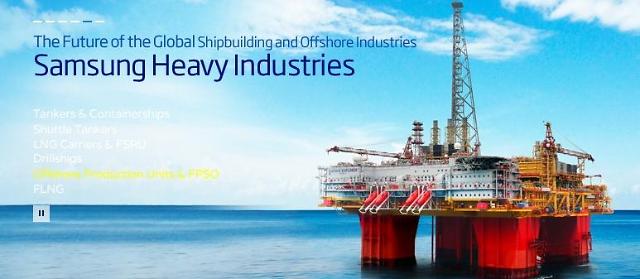
[Courtesy of Samsung Heavy Industries]
SEOUL -- Samsung Heavy Industries, a major shipbuilder in South Korea, will develop technology for designing a key component for floating offshore wind turbines, citing its accumulated experience in building offshore plants, as part of an industry-wide campaign to localize related technologies.
Samsung Heavy Industries (SHI) said that it has partnered with DNV GL, an international accredited registrar and classification society headquartered in Norway, for the joint development of element technologies for designing flowing wind turbine floaters and "digital twin" remote maintenance technologies.
The floater is a large structure supporting wind power generation facilities, which are similar in design to semi-submersible crude oil production facilities. The digital twin is a digital solution that creates a clone of an object inside a virtual world to simulate real-world problems.
SHI gave a favorable assessment of the market outlook. "As global interest in climate change and renewable energy spreads, the demand for floating offshore wind power generation is expected to increase," SHI's technology development center head Chung Ho-hyun said in a statement. "We will secure independent design capabilities for floating offshore wind power based on our strong capacity to carry out marine projects."
Commercial floating wind turbines are at the early phase of development. Compared to fixed offshore wind farms which are generally installed in shallow waters, floating wind turbines located in deep waters can reduce visual pollution, provide better accommodation for fishing and shipping lanes, and reach stronger and more consistent winds.
The southeastern industrial port city of Ulsan has pushed for a major floating wind farm project in line with a government campaign to step up the use of wind, solar and other types of renewable energy. The Seoul government has called for the localization of technologies related to floating offshore wind farms by 2025.
Copyright ⓒ Aju Press All rights reserved.

![[FOCUS] Ulsan attracts new partners for state-sponsored project to build floating wind farm](https://image.ajunews.com/content/image/2020/06/10/20200610143526658948_278_163.jpg)
